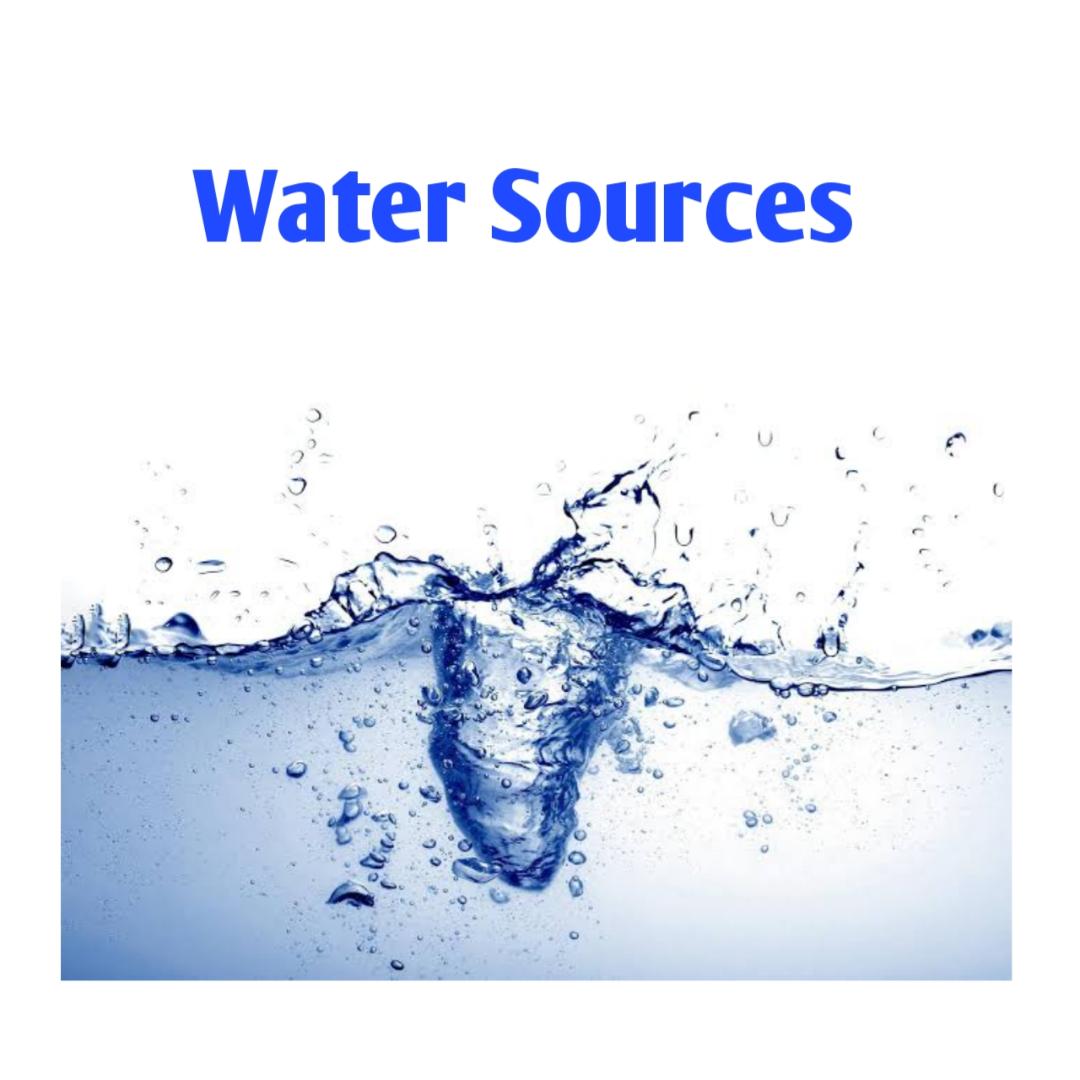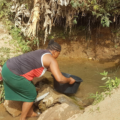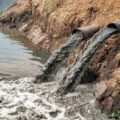Water is a chemical substance composed of hydrogen and oxygen existing in gaseous, liquid and Solid tastes that is essential to all known forms of life. Water is a clear, colourless, odourless, tasteless liquid that freezes into ice below 0 degrees centigrade and boils above 100 degrees centigrade.
The chemical formula of water is hydrogen oxide (H2O) and it has the important ability to dissolve many other substances. Indeed, the versatility of water as a solvent is essential to living organisms. Life is believed to have originated in the aqueous solutions of the world’s oceans, and living organisms depend solely on aqueous solutions, such as blood and digestive juices, for biological processes.
In small quantities, water appears colourless, but water actually has an inherent blue colour caused by slight absorption of light at red wavelengths. Although the molecules of water are simple in structure (H2O), the physical and chemical properties of the compound are extraordinarily complicated, and they are not typical of most substances found on Earth.
Water is vital both as a solvent in which many of the body’s solutes dissolve and as an essential part of many metabolic processes within the body. Metabolism is the sum total of anabolism and catabolism. In anabolism, water is removed from molecules (through energy requiring enzymatic chemical reactions) in order to grow larger molecules (e. g. starches, triglycerides and proteins for storage of fuels and information).
In General, water is essential for life. The amount of fresh water on earth is limited, and its quality is under constant pressure. Preserving the quality of freshwater is important for the drinking-water supply, food production and recreational water use. Water quality can be compromised by the presence of infectious agents, toxic chemicals, and radiological hazards.
Natural Sources Of Water
Water is one of the vital elements needed in our day to day activities as a living being. Water is not just essential to our health, but we also use it for numerous household tasks such as cooking, bathing, cleaning, and drinking; but how often do we think about its source? Where does our water come from? How is it treated? How do we know it is safe to drink? and many other questions we ought to raise.
Major Sources of Water
However, there are two major sources of water which are surface water and groundwater. Surface Water is found in lakes, rivers, and reservoirs. Groundwater lies under the surface of the land, where it travels through and fills openings in the rocks.
For the benefit of our readers, Concise news have splited the sources of water into different places for better understanding. There are a total of eight natural sources of water. Let take a look at each and what supplies these sources.
- Ground Water
Groundwater is water that is found underground within rocks. Its presence depends primarily on the type of rock. Permeable rocks have tiny spaces between the solid rock particles that allow water and other fluids to pass through and to be held within the rock structure. The layers of rock that hold groundwater are called aquifers.
Groundwater in an aquifer is replenished by rain and other forms of precipitation (any form of water, such as rain, snow, sleet or hail that falls to the Earth’s surface. The level of water below ground is called the water table. Groundwater can be extracted from wells or collected from springs.
Advantages and disadvantages of using groundwater as a water source
Advantages
- Likely to be free of pathogenic bacteria
- Usually free of turbidity and colour
- Can usually be used without further treatment
- Can often be found in close vicinity to consumers
- Economical to obtain and distribute
- The water-bearing soil or rock provides a natural storage point
Disadvantages
- Often has a high mineral content (i.e. has naturally occurring substances that are not from living organisms) such as calcium, magnesium, iron and manganese
- Usually requires pumping for extraction
- May have a high level of bicarbonate, carbonate and chloride
- Poor in oxygen content
- Can contain chemical contaminants such as arsenic, fluorides and nitrates
- Well Water
Well water as a source of water can be described by their depth, or by the way they are constructed. Most especially they use different types of pumps at the surface to raise the water.
The pump is usually used to retrieve water and it goes through an extensive filtration or decontamination process either naturally or chemically. There are two major types of well water
Shallow wells
Shallow wells and boreholes usually have a depth of less than 30 m, although they can be as much as 60 m deep, especially in very dry areas of Ethiopia where the water table is low.
Wells can be excavated by hand if the soil is not too hard or the water table is high. Hand-dug wells have a relatively large diameter because they have to be wide enough for a person to be able to stand inside and dig.
Deep wells
These are wells that have been sunk with drilling machines designed for constructing water extraction boreholes. These machines are able to penetrate through harder material that cannot be tackled by hand digging and can therefore pass through at least one impermeable layer of rock to a productive aquifer underneath.
Deep well water
Deep well typically obtain water from depths ranging from 30 to 60 m, but large urban supply boreholes can be much deeper than this. A casing of metal or plastic pipe is usually necessary to line the borehole and prevent the soil and rock from collapsing into it. The lower part of the casing must have suitable openings to allow water to enter the borehole from the aquifer.
- Rain Water
Rain water is the source of water that comes from above the clouds, this water is very pure. Until it encounters something on its way down. However, if it is stored properly it may relinquish clean drinking water.
In regions where rainfall is abundant and frequent, rainwater can be a good source of water supply for individuals, families and some communities. The storage of rainwater is particularly important in areas with a long dry season, or where spring water is difficult to obtain.
The term rainwater harvesting is sometimes used. It simply means collecting, or harvesting, rainwater as it runs off from hard surfaces and storing it in a tank or cistern.
Rainwater has several advantages. It is free, relatively clean and usually reliable, even if it rains only once or twice a year, a rainwater harvesting system can be easily constructed and maintained at low cost. Although mainly found in rural areas.
Apparently, if rainwater is used for water supply, it is important to ensure that it is not contaminated by improper methods of storage, or by bird droppings and leaves from the roof that it is collected from.
Rainwater may also be contaminated by pollution in the air, dust, dirt, paint and other material on the roof or in roofing materials. All of these contaminants can be washed into the storage tank or cistern.
- Surface Water
Surface water is easily the most abundant supply of natural water. The downside is that most of the surface water on the planet is saltwater so it is not ideal for drinking for most living species. Surface water does play an important part in our daily lives in addition to being a source of drinking water.
Surface water is used to produce hydroelectric power as a clean energy source that is also renewable. Surface water is supplied by precipitation, springs and ice melting from higher elevations and glaciers.
- Snow melt
Melting snow is another natural source of water when melted in great amounts can yield clean drinking water especially once boiled.
- Lake And River Water
Lakes and rivers provide much water to wild animals and if cleaned and filtered properly it could become clean enough to drink for humans. Most countries with access to lakes and rivers use their water for human consumption. This source of water supply is usually regularly replenished by various weather events.
- Saltwater from oceans
Although ocean water makes up nearly 97 percent of all water on earth, it is not a viable source of potable water unless salt and other impurities are removed. Desalination, the process by which salt is removed from the water, is a rapidly growing practice. While salt and other microscopic particles can be removed from water in a variety of ways, the most promising method is through reverse osmosis. This process forces saltwater through filters with microscopic pores that remove salt and other microbes. Reverse osmosis requires large amounts of energy, making it a very expensive process. Ocean water can effectively be processed for consumption through the desalinisation process removing excess salt. Without this process, the water becomes counter-active and actually dehydrates you.
- Reservoirs
Although not a primary source, reservoirs are another major source of water. The amount of water that can be stored in a reservoir depends on:
– river discharge (which in turn depends on rainfall)
– height of the dam (when closing the river in a valley)
– area of the reservoir (in the case of an artificially excavated storage area).
Water can also be stored off-stream by diverting the flow into a natural depression or dead river branch alongside the river, or by constructing a storage reservoir. This is similar to the lake situation.
- Spring
A spring is the result of an aquifer being filled to the point that the water overflows onto the land surface. The water for springs comes from underground sources called aquifers. Aquifers are most commonly inside a permeable rock, or underground layers of materials like sand, clay, and gravel. These substances function as a sponge, soaking up water that seeps down into them. They range in size from intermittent seeps, which flow only after much rain, to huge pools flowing hundreds of millions of gallons daily. Springs are not limited to the Earth’s surface, though.
Common Uses of Water
Water (H2O) is one of the most common molecules on earth and a critical one for the existence of life. As such, there are countless uses for water. Not only does water sustain life through several uses, but it is a critical component in manufacturing, transport and energy. Water also is a key component in many recreational activities. Water is one of the most used compounds on earth.
Everyday Living
The most common use of water is through drinking. People drink water almost every day and would not be able to survive without doing so. Water is also used in everyday life for cooking, cleaning, washing and playing. These activities use on average 90 gallons of water per day for the average American. Except when asleep, it is rare to go more than a couple of hours without some interaction with water.
Agriculture
Agricultural use of water is one of the most common uses of water. Not only are crops watered through various applications of water, but livestock also require daily use of water. Techniques such as irrigation, spraying, flooding and relying on natural precipitation all aid agriculture. Water is provided from reservoirs, canals and wells as key sources for agriculture. Fisheries and open water harvesting of seafood is a further example of how water is a part of agriculture.
Energy
Many often initially think of hydroelectric power generation when considering the use of water in energy generation. However, the use of water goes far beyond that. Water wheels are still used around the world to produce mechanical energy. Water is also a critical function in the production of energy in fossil fuel-based generation plants. The fossil fuels are burned in order to convert water into steam, which in turn is used to turn the turbines that generate the electricity.
Manufacturing
Water plays a critical role in numerous industries. It is the most common cooling agent for many heat-intensive industrial applications. It is a common solvent in many chemical processes and is also a common component in washing and cleaning steps in many processes. Water also is used in transportation on several scales in the industry. Not only are goods transported by ships and barges, but raw materials are often transported by slurry in many industries, most especially mining. There are very few heavy industries that do not use water in part of their process.
Water source development
One of the main duties of a water supply provider is to ensure that a safe and plentiful water supply is available to all segments of a community at a reasonable cost. This may mean seeking new water sources to satisfy demand. Identifying potential new sources and assessing their viability prior to development is a skilled technical task that requires several different factors to be assessed. These factors include:
Volume of water required: This will depend on demand, which relates to the number and type of potential users. Will the new source be able to meet the demand of all users? Have future increases in demand and population growth been taken into consideration?
Quality: Is the water from a safe and protected source? If not, what will be the level of treatment needed and how will this be achieved? What is the risk of pollution of the source?
Seasonal variations: Is the new water source reliable, or is it vulnerable to seasonal variations in the availability of water? How will this be accommodated?
Distance between source and users: How far must the water be transported? What is the sort of distribution system that will be needed? What are the engineering requirements for the system?
Cost: Following on from all the above, what is the cost of developing the new source (both capital and continuing operating and maintenance costs) into the future?
Environmental impact: What are the predicted environmental consequences of developing the water source? Will the benefits of the new supply outweigh any disadvantages?
Sustainability: Can the water source be developed and used in such a way that it does not compromise the future ability to supply water? For example, the rate of abstraction from a spring should not exceed the rate of natural replenishment.
SEE: Is distilled water safe for babies?
Careful Use Of Water Sources
Although all the natural sources of water are constantly replenished through weather cycles, we still need to be conservative on how we use water. Freshwater is like a precious gift. We should use it sparingly and do everything in our power to share and protect it for future generations. When we control how we use water, we are helping the planet.
Try to not waste water in your home by using flow regulators and collect rainwater for use in your garden. There are several ways to keep the natural water cycle flowing if we are careful in how we use the water we have access to today.






